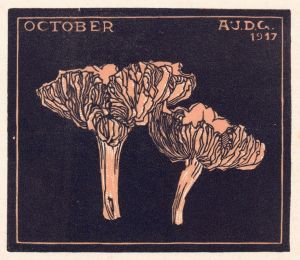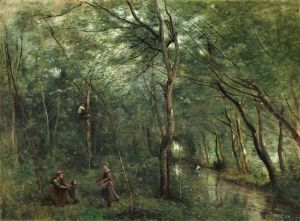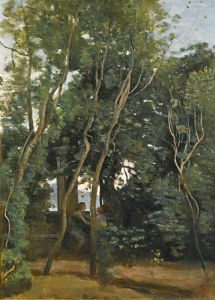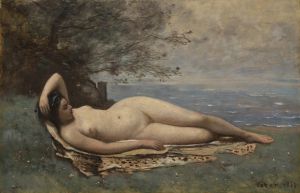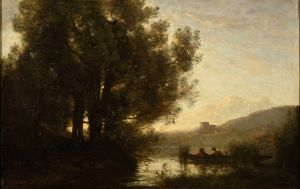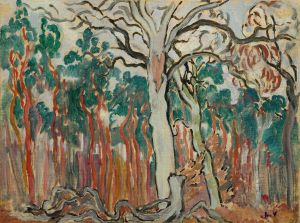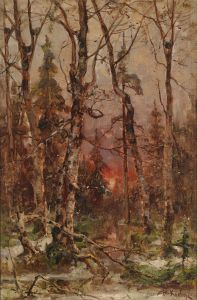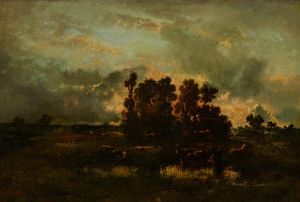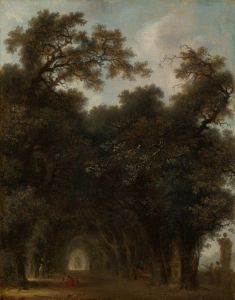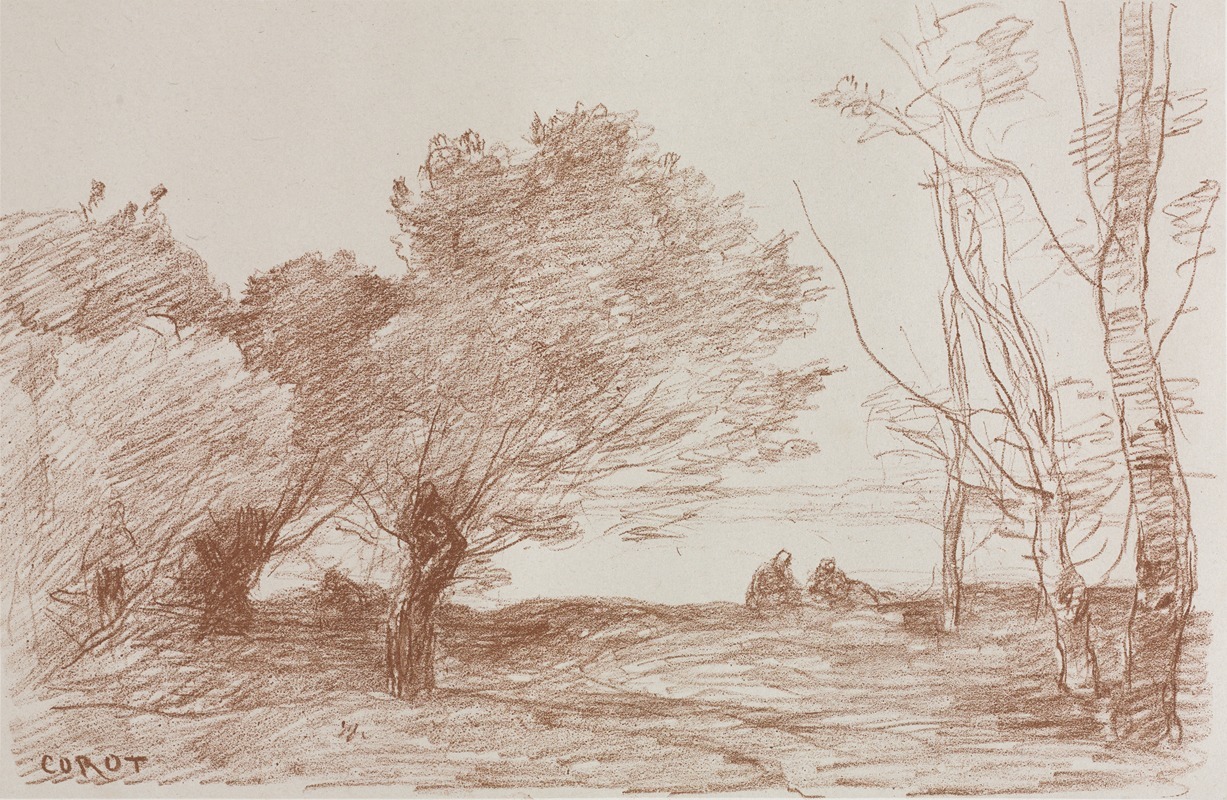
Willows and Poplars
A hand-painted replica of Jean-Baptiste-Camille Corot’s masterpiece Willows and Poplars, meticulously crafted by professional artists to capture the true essence of the original. Each piece is created with museum-quality canvas and rare mineral pigments, carefully painted by experienced artists with delicate brushstrokes and rich, layered colors to perfectly recreate the texture of the original artwork. Unlike machine-printed reproductions, this hand-painted version brings the painting to life, infused with the artist’s emotions and skill in every stroke. Whether for personal collection or home decoration, it instantly elevates the artistic atmosphere of any space.
Jean-Baptiste-Camille Corot was a pivotal figure in landscape painting during the 19th century, known for his ability to capture the essence of nature with a delicate balance of realism and poetic interpretation. One of his notable works is "Willows and Poplars," which exemplifies his mastery in portraying the serene beauty of the natural world.
Corot was born in Paris in 1796 and became a leading figure in the Barbizon School, a movement that emphasized painting en plein air, or outdoors, to capture the natural light and atmosphere of the landscape. His work laid the groundwork for the Impressionist movement, influencing artists such as Claude Monet and Camille Pissarro.
"Willows and Poplars" is a testament to Corot's skill in depicting the tranquil and harmonious aspects of nature. The painting features a serene landscape dominated by willows and poplars, trees that are often associated with grace and resilience. Corot's use of soft, muted colors and gentle brushstrokes creates a sense of calm and tranquility, inviting the viewer to immerse themselves in the peaceful setting.
Corot's approach to landscape painting was innovative for his time. He often worked outdoors, directly observing the natural environment, which allowed him to capture the fleeting effects of light and atmosphere. This method was a departure from the more traditional studio-based approach to landscape painting and helped to pave the way for future developments in the art world.
In "Willows and Poplars," Corot's attention to detail is evident in the way he renders the textures of the trees and the play of light on their leaves. The composition is carefully balanced, with the willows and poplars framing the scene and drawing the viewer's eye into the depth of the landscape. Corot's ability to convey the subtle nuances of light and shadow adds a sense of realism to the painting, while his poetic interpretation imbues it with a dreamlike quality.
Throughout his career, Corot remained dedicated to exploring the beauty of the natural world. His landscapes often feature a sense of timelessness and universality, capturing the essence of nature in a way that resonates with viewers across generations. "Willows and Poplars" is a prime example of this enduring appeal, showcasing Corot's ability to blend observation with imagination to create a work that is both realistic and evocative.
Corot's influence on the art world extends beyond his own paintings. His innovative techniques and dedication to capturing the natural world inspired a new generation of artists to explore the possibilities of landscape painting. His work continues to be celebrated for its beauty and its contribution to the evolution of art in the 19th century.
In summary, "Willows and Poplars" by Jean-Baptiste-Camille Corot is a significant work that highlights the artist's skill in capturing the serene beauty of nature. Through his innovative approach to landscape painting, Corot was able to convey the subtle interplay of light and atmosphere, creating a work that is both realistic and poetic. His influence on the art world is profound, and his legacy continues to inspire artists and art lovers alike.






